Takashi Murakami Jellyfish Eyes - Saki 2004 FRP, steel, acrylic, and lacquer, on a painted wood artist's plinth sculpture 52 1/2 x 30 1/2 x 38 7/8 in. (133.4 x 77.5 x 98.7 cm) plinth 39 3/8 x 39 3/8 x 8 in. (100 x 100 x 20.3 cm) This work is number 1 from an edition of 3 plus 2 artist's proofs, each uniquely colored.
Provenance Blum & Poe, Los Angeles Exhibited Los Angeles, Blum & Poe, Takashi Murakami Inochi, May 14 - June 26, 2004 Liverpool, Jellyfish Eyes Characters - Liverpool Biennial International 04, September - November, 2004 (another example exhibited) Versailles, Murakami Versailles, September - December, 2010 (another example exhibited) Literature F. Bonami, C. Christov-Bakargiev, The Patagruel Syndrome, Turin: Skira Editore, 2005, n.p. Murakami Versailles, exh. cat., Versailles, 2010, pp. 65-66 (illustrated) Catalogue Essay "With these three characters......I wanted, I think, to create my own ‘gods of art.'" Takashi Murakami 2002 Underpinning Takashi Murakami’s work is a complex understanding of Japanese visual culture, and a sense of its manifold histories. He draws heavily upon circumambient material, owing a special debt to otaku culture, a particularly obsessive form of manga and anime fandom. His artistic output, in all its varied forms, is populated by monsters, toy-like figurines, and cartoonish lines, often in debased and altered forms. This tendency is manifested with particular force in sculptures like My Lonesome Cowboy in which toy-like plasticity gives way to grotesque sexuality. The obsession typical of otaku fandom finds expression in his use of recurrent characters, most notably DOB, an anime-derived creature whose menacing grin is a common motif in his work. Murakami thus situates a personal iconography and brand within a subcultural tradition. In seeking a visual language capable of representing his experience of contemporary Japan, Murakami is also drawn further into his nation’s past. In the early stages of his artistic development he studied nihon-ga painting, a formally exacting nineteenth century style that fuses Western and Eastern methodologies. But perhaps more important to his work is the Edo period tradition of ukiyo-e woodblock prints. Translated as “floating world”, ukiyo-e prints often depicted scenes of youthful hedonism and as Amada Cruz recognizes “were a popular form of entertainment (much like manga today), full of humor and, sometimes, uninhibited sex” (‘DOB in the Land of Otaku’, Takashi Murakami the Meaning of Nonsense of the Meaning, exh. cat., 1999, p. 19). By uniting apparently disparate historical strands, Murakami allows points of continuity to emerge. Most importantly, the identification of parallels allows him to arrive at a theory of Japanese aesthetics that emphasizes a flattened visual plane as its distinctive stylistic feature. In his own practice this two-dimensionality finds expression in a “Superflat” methodology, his own coinage which denotes not only a technical approach but also a levelled postmodern terrain in which once-axiomatic boundaries are increasingly redundant. One such boundary which Murakami’s work is interested in challenging is that between art and commercialism. In 2007, he brought his “Superflat” style to Kanye West’s Graduation album cover, but perhaps his best known commercial collaboration is with Louis Vuitton. He began working with the company in 2002, designing artwork for a series of handbags, and in 2007 installed a store selling the fruit of their collaboration inside the Los Angeles Museum of Contemporary Art. This willingness to situate his work within a globalized economy has understandably attracted comparisons to American artists like Jeff Koons and even to Pop Art forebears like Andy Warhol The latter comparison is particularly persistent, and understandably so. In 1996, Murakami established a studio called the Hiropon Factory whose was a “clear nod to Warhol and his infamous Factory, where a changing cast of characters similarly assisted him in his varied activities.” (‘DOB in the Land of Otaku’, Takashi Murakami the Meaning of Nonsense of the Meaning, exh. cat., 1999, p. 16) The Hiropon Factory has since grown into Kakai Kiki Co. Ltd, which continues to challenge established lines between art and merchandise. The present lot, Jellyfish
Takashi Murakami Jellyfish Eyes - Saki 2004 FRP, steel, acrylic, and lacquer, on a painted wood artist's plinth sculpture 52 1/2 x 30 1/2 x 38 7/8 in. (133.4 x 77.5 x 98.7 cm) plinth 39 3/8 x 39 3/8 x 8 in. (100 x 100 x 20.3 cm) This work is number 1 from an edition of 3 plus 2 artist's proofs, each uniquely colored.
Provenance Blum & Poe, Los Angeles Exhibited Los Angeles, Blum & Poe, Takashi Murakami Inochi, May 14 - June 26, 2004 Liverpool, Jellyfish Eyes Characters - Liverpool Biennial International 04, September - November, 2004 (another example exhibited) Versailles, Murakami Versailles, September - December, 2010 (another example exhibited) Literature F. Bonami, C. Christov-Bakargiev, The Patagruel Syndrome, Turin: Skira Editore, 2005, n.p. Murakami Versailles, exh. cat., Versailles, 2010, pp. 65-66 (illustrated) Catalogue Essay "With these three characters......I wanted, I think, to create my own ‘gods of art.'" Takashi Murakami 2002 Underpinning Takashi Murakami’s work is a complex understanding of Japanese visual culture, and a sense of its manifold histories. He draws heavily upon circumambient material, owing a special debt to otaku culture, a particularly obsessive form of manga and anime fandom. His artistic output, in all its varied forms, is populated by monsters, toy-like figurines, and cartoonish lines, often in debased and altered forms. This tendency is manifested with particular force in sculptures like My Lonesome Cowboy in which toy-like plasticity gives way to grotesque sexuality. The obsession typical of otaku fandom finds expression in his use of recurrent characters, most notably DOB, an anime-derived creature whose menacing grin is a common motif in his work. Murakami thus situates a personal iconography and brand within a subcultural tradition. In seeking a visual language capable of representing his experience of contemporary Japan, Murakami is also drawn further into his nation’s past. In the early stages of his artistic development he studied nihon-ga painting, a formally exacting nineteenth century style that fuses Western and Eastern methodologies. But perhaps more important to his work is the Edo period tradition of ukiyo-e woodblock prints. Translated as “floating world”, ukiyo-e prints often depicted scenes of youthful hedonism and as Amada Cruz recognizes “were a popular form of entertainment (much like manga today), full of humor and, sometimes, uninhibited sex” (‘DOB in the Land of Otaku’, Takashi Murakami the Meaning of Nonsense of the Meaning, exh. cat., 1999, p. 19). By uniting apparently disparate historical strands, Murakami allows points of continuity to emerge. Most importantly, the identification of parallels allows him to arrive at a theory of Japanese aesthetics that emphasizes a flattened visual plane as its distinctive stylistic feature. In his own practice this two-dimensionality finds expression in a “Superflat” methodology, his own coinage which denotes not only a technical approach but also a levelled postmodern terrain in which once-axiomatic boundaries are increasingly redundant. One such boundary which Murakami’s work is interested in challenging is that between art and commercialism. In 2007, he brought his “Superflat” style to Kanye West’s Graduation album cover, but perhaps his best known commercial collaboration is with Louis Vuitton. He began working with the company in 2002, designing artwork for a series of handbags, and in 2007 installed a store selling the fruit of their collaboration inside the Los Angeles Museum of Contemporary Art. This willingness to situate his work within a globalized economy has understandably attracted comparisons to American artists like Jeff Koons and even to Pop Art forebears like Andy Warhol The latter comparison is particularly persistent, and understandably so. In 1996, Murakami established a studio called the Hiropon Factory whose was a “clear nod to Warhol and his infamous Factory, where a changing cast of characters similarly assisted him in his varied activities.” (‘DOB in the Land of Otaku’, Takashi Murakami the Meaning of Nonsense of the Meaning, exh. cat., 1999, p. 16) The Hiropon Factory has since grown into Kakai Kiki Co. Ltd, which continues to challenge established lines between art and merchandise. The present lot, Jellyfish
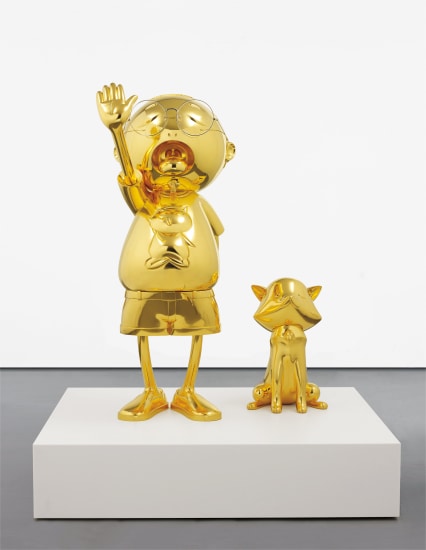



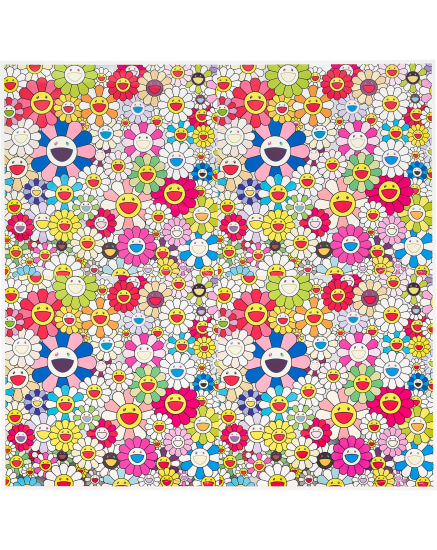

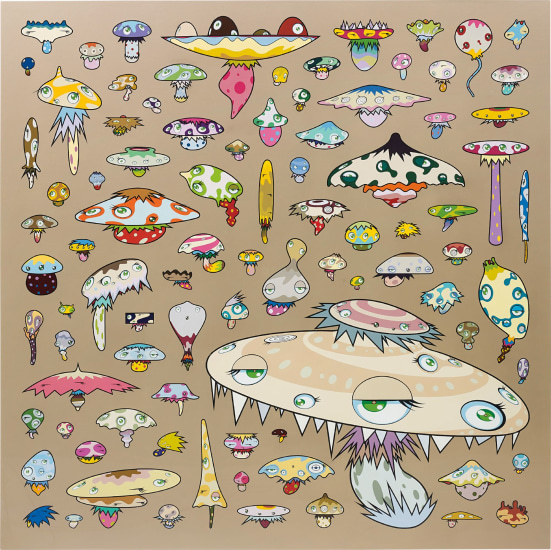

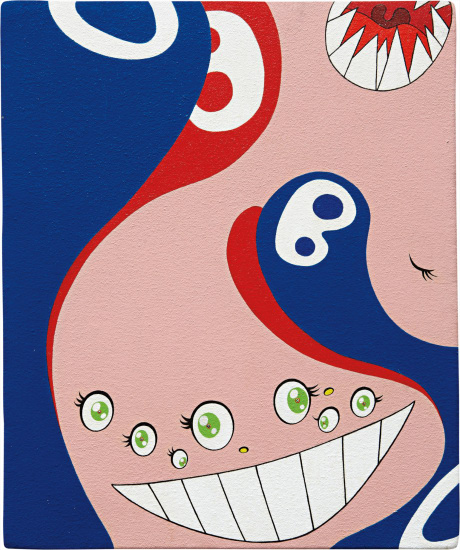

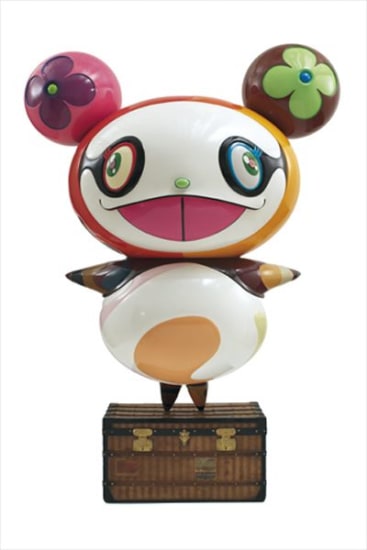
Try LotSearch and its premium features for 7 days - without any costs!
Be notified automatically about new items in upcoming auctions.
Create an alert